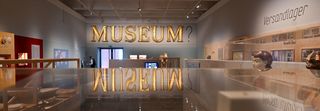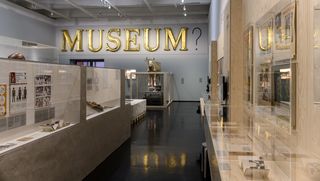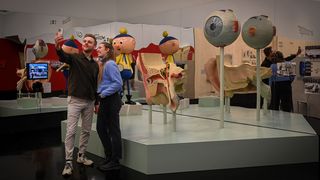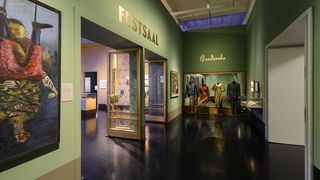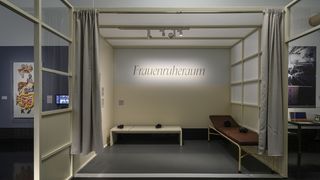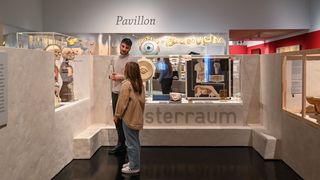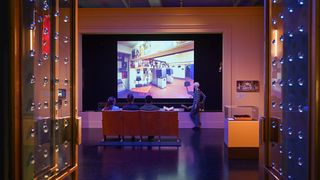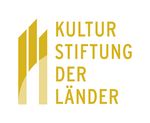About the exhibition
Introduction
In the German Democratic Republic, the term Volkseigener Betrieb (VEB) designated the legal form of state-owned enterprises according to the Soviet model. The Deutsches Hygiene-Museum was not a genuine VEB in the strict sense of the term; however, it did function in a very similar way. So what was special about this museum that many East Germans still remember to this day? What can its history in the German Democratic Republic tell us about the society and working world of a state that no longer exists? What are the themes that made this long-standing museum, founded in 1912, so appealing?
For the first time, a special exhibition now looks at this period of the museum’s history, from the early post-war years to the museum’s restructuring in the 1990s. The focal point of the exhibition is the multi-layered profile of the museum, which was characteristic of its East German phase. As a state-run ‘Institute for Health Education’, it served not just as a well-attended exhibition venue, but also as a production facility for anatomical models and other medical teaching resources and educational materials. And last but not least, it was also a ‘clubhouse’ where cultural events were held for – and with – its employees.
The experience of everyday life and dictatorship in the German Democratic Republic is now once again at the centre of social debate in both East and West. Through its retrospective view of the microcosm at play at the Dresden museum, the exhibition seeks to prompt an intergenerational dialogue about life in the German socialist state and the change in political system post-1989.
It is aimed equally at visitors who were socialised in East Germany and those unfamiliar with the GDR from personal experience. It offers a public platform for disparate memories and current controversies, opening up a discussion on common ideas about life in the GDR. Numerous video interviews with contemporary witnesses complement the exhibition with personal perspectives on an important chapter in the museum’s history and, indeed, on contemporary history.
The individual sections of the exhibition have been drawn from key functional spaces of the former production facility within the museum. Three acclaimed stage and set designers have created a highly distinctive associative imagery for the walking tour of the museum, laid out as a ‘factory tour’.
Gallery
I. Network
The touring exhibitions and teaching resources produced by the Deutsches Hygiene-Museum were marketed the world over, generating sizeable foreign currency revenues for the East German state. The extensive product range, the visits of delegations from around the globe and the activities of the museum’s ‘travelling cadres’ are examined against the backdrop of the GDR’s economic and foreign policies. Personal stories of migration to East Germany that reach through to the present day are highlighted in a ‘side note’ on the international employees working at the museum, contract workers in Dresden and students from ‘friendly’ countries.
II. Power Space
East Germany’s political power constellations defined the museum’s management structures. So how stark was the SED’s influence? In which areas did the museum and the Ministry for State Security overlap? Where did the boundaries lie, and how much room for manoeuvre was there? Environmental pollution is used as an example to illustrate how, for political reasons, the DHMD ditched various topics which were then picked up by civil society beyond the confines of the museum. Finally, the exhibition also looks at the ‘culture’ of improvisation and repair that prevailed in East Germany, deployed to keep not just the DHMD up and running in the face of widespread material shortages. Thanks to such skills and competence, the workforce was able to exert considerable power beyond the official hierarchical structure.
III. Production
This section showcases the production conditions and the work processes at the museum’s workshops and studios. Which products were designed and mass-produced there, and using what kind of resources? What traits characterised the socialist work culture? What sort of social status did the quality of the products have? The exhibition explains the processes, materials and expertise of the various trades and features some of the employees of the time.
IV. Clubhouse
In East Germany, the larger production facilities operated their own events centre for employees, their families and others interested in such activities. The DHMD, too, could be seen as a contemporaneous ‘clubhouse’ of this kind. Not only were state-sponsored events held on its premises and health education campaigns presented there, but a wide variety of cultural and social activities also took place at the museum, including writing circles, singing clubs and carnival festivities. Beyond these DHMD programmes, this section illustrates East Germany’s official – and idiosyncratic – club culture. By way of example, the exhibition offers a reminder of some of the defining cultural events in Dresden in the 1980s.
EPILOGUE
The lives of many of the DHMD’s employees were seriously impacted by the repercussions of reunification. As the production facilities were wound up and various departments closed, even the museum’s continued existence was briefly in doubt. But thanks to the collaboration between experienced employees and newly recruited staff, it proved possible to restructure the exhibition area and lay the foundations for the museum’s successful further development.
